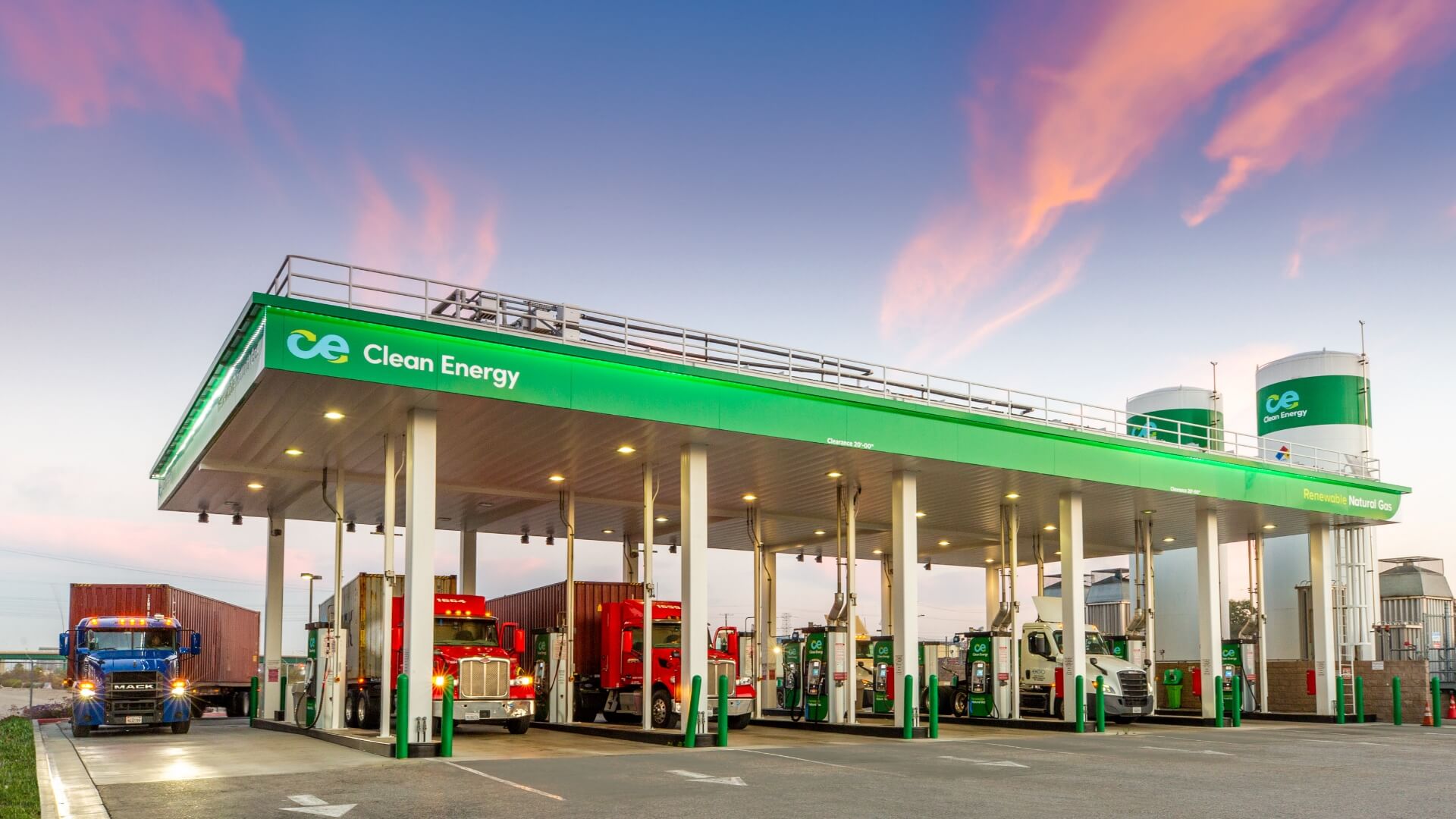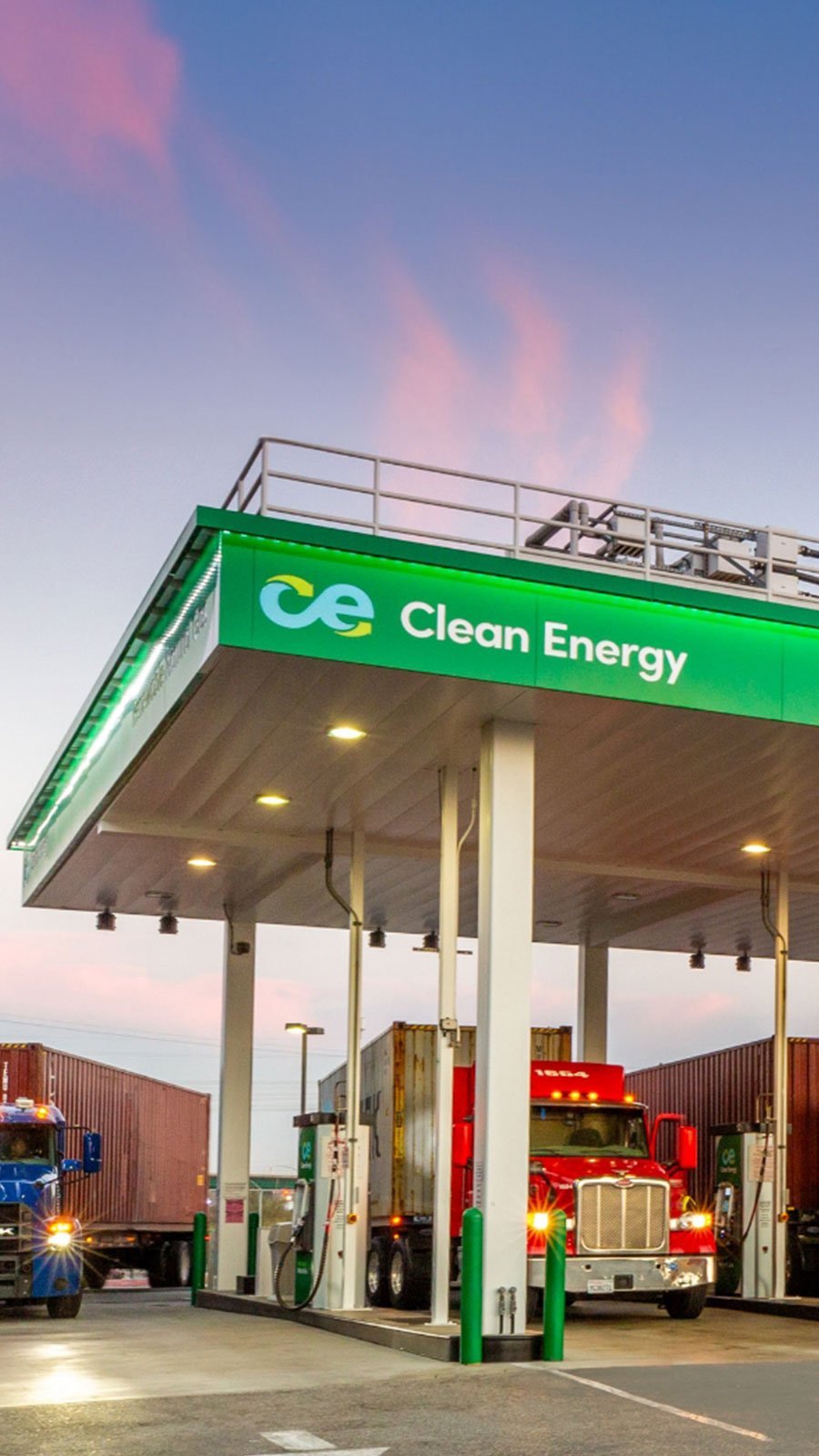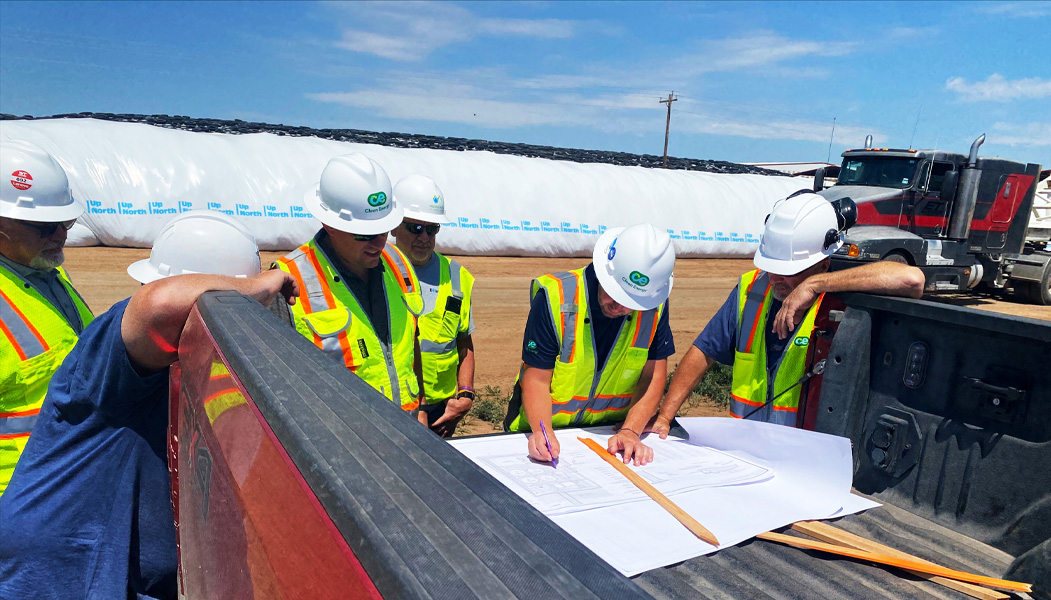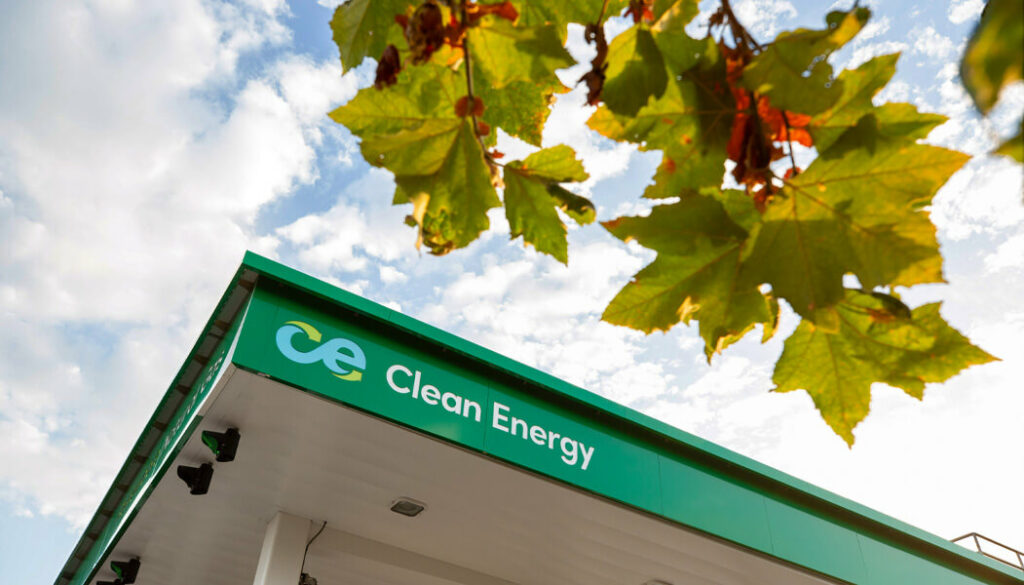Renewable natural gas.
Decarbonization in the fast lane.
Renewable natural gas (RNG) is a transportation fuel made from organic waste. It can drastically reduce carbon emissions by over 300% versus diesel, and at a fraction of the price. Unlike conventional natural gas, renewable natural gas is not a fossil fuel and does not involve drilling or fracking.
Clean Energy is the largest provider of renewable natural gas for the transportation industry in North America. We produce RNG at dairy farms nationwide and then distribute it through our extensive network of 600+ fueling stations, ensuring convenient access for the 50,000 heavy-duty trucks, buses, and large vehicles running on RNG daily.

Sustainability
without sacrifice.
The new Cummins X15N natural gas engine is a game changer for heavy-duty trucking. We can now combine the powerful carbon reduction benefits of RNG with the performance needed for long-haul applications.
- Power ratings up to 500hp, torque up to 1850 lb-ft, and 700+ mile range
- Nationwide network of fast-fill RNG fueling stations for tractor-trailers
- Meets stringent EPA and CARB regulations in 2024 and 2027





































